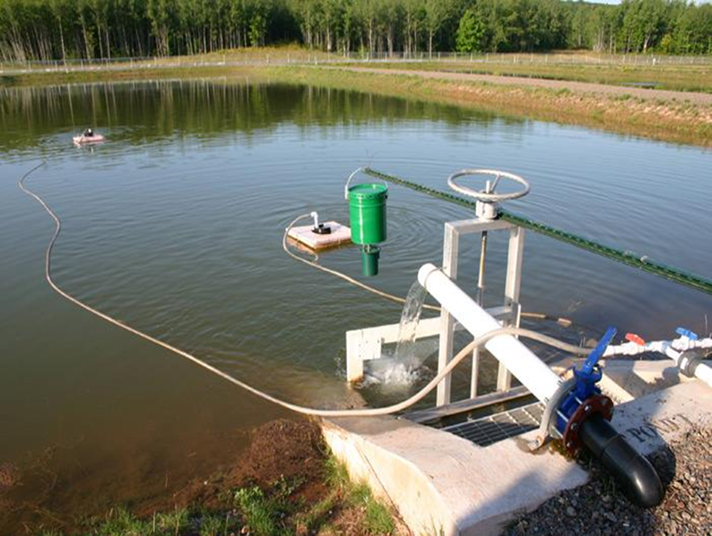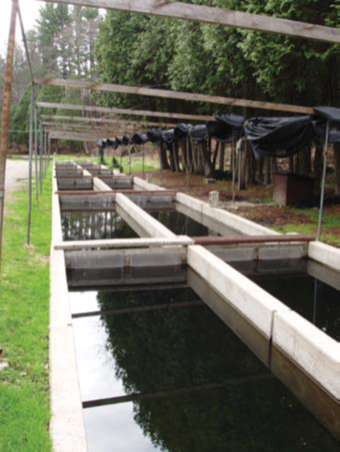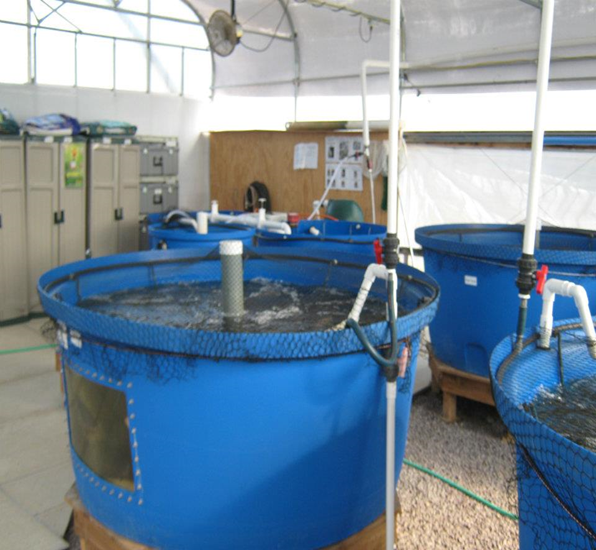There are many different types of production systems used to raise fish in freshwater aquaculture in the U.S. The systems are ponds, flow-through raceways, recirculating aquaculture systems, cages, net pens, and partitioned aquaculture systems. In Wisconsin, the most common type of fish production system is ponds followed by farms that use flow-through and recirculating systems for fish production.

Ponds are the most common type of production system used in the U.S. for aquaculture (Stickney 2009, Malison and Hartleb 2005). This production system requires the lowest amount of human manipulation to raise fish extensively. There are several types of ponds that are used for different phases of the fish growth. The first type is a spawning pond which is typically less than 1 acre in size and relatively easy to drain and fill. This type of pond is used for allowing broodstock fish to spawn and produce eggs for future fish. The second type is the fingerling pond and is usually 1-5 acres in surface area. These ponds are used to allow the young fish to grow in a natural setting and consume wild food sources. The final type of pond is the finishing pond which can be greater than 5 acres in size. This pond can be used for continual growth of fish. A finishing pond is also known as a grow-out pond. Grow-out ponds allow the fish to grow to a marketable size able to be harvested and sold.

Flow-through production systems are also called raceways. In this system, water is continually moving. With the constant replacement of water, fish can be raised at high densities (Malison and Hartleb 2005, Wedemeyer 2001). Raceways require continuous water flow which can be difficult and costly for the farm operator. Thus, with the water requirements, the source of water is usually springs, artesian wells, or diverted streams (Malison and Hartleb 2005). The system usually consists of long and narrow raceways. Flow-through systems can be setup to operate in a single-pass, recirculating, or floating water flow systems (Wedemeyer 2001). The single-pass setup can have either parallel or series water flow for the raceways. In single-pass parallel flow water only passes through one raceway before exiting the system. With series flow the water flows from one raceway into another raceway often up to 4 times before leaving the system (Wedemeyer 2001, Malison and Hartleb 2005). The recirculating raceway system has water flow that is reused and passes through filtration tanks to remove the waste and other harmful nutrients in the water. In a floating raceway system the water is pumped from the water body often a lake/pond using air to lift water (Malison and Hartleb 2005). The lake then operates as the filtration for the raceway. Raceways require more human interaction than ponds to maintain healthy growth for the fish.

The recirculating aquaculture systems (RAS) consist of many different tanks and pumps to move the water. Many RAS’s are able to reuse 95-99% of the water in the system. The water source for most RAS’s is from the groundwater wells or dechlorinated city water supply (Timmons and Ebeling 2007, Malison and Hartleb 2005). The system consists of tanks for holding the fish for growth, along with filter tanks to remove solid waste, bio-filter tanks for removing harmful nutrients, gas exchanger tanks to remove CO2, and pumps maintain constant water flow (Wedemeyer 2001). Along with the filters to remove waste there are pumps needed to add oxygen to the system. There is also a need to control temperature in the system so heaters and chillers work to maintain a constant temperature (Timmons and Ebeling 2007, Malison and Hartleb 2005). RAS’s are usually the most human intensive system to operate. They are often the most expensive to keep operational due to the need for electricity to run the essential pumps and heaters in the system.
